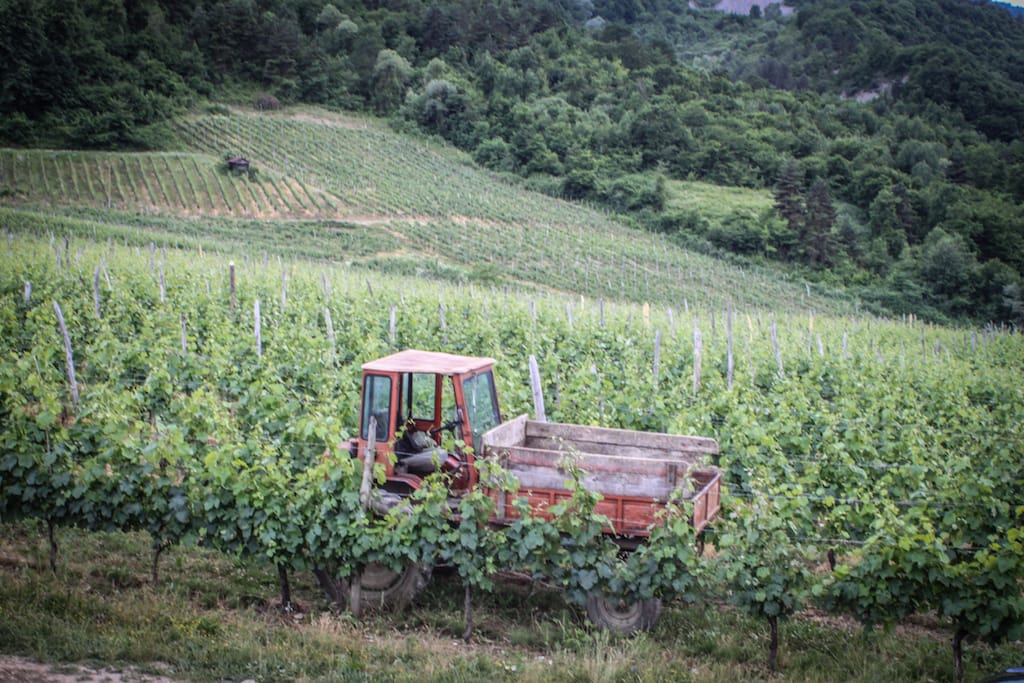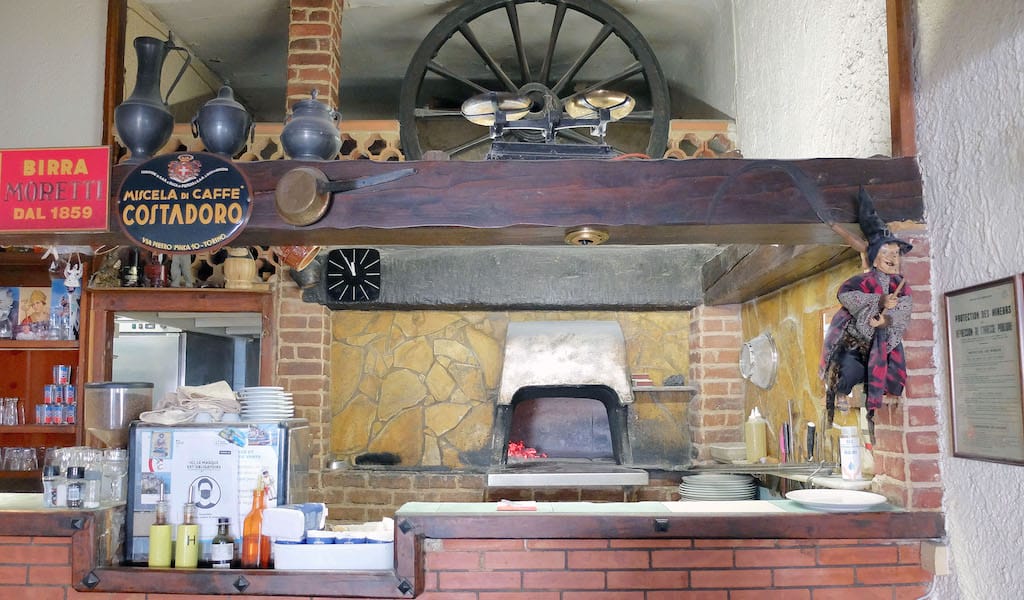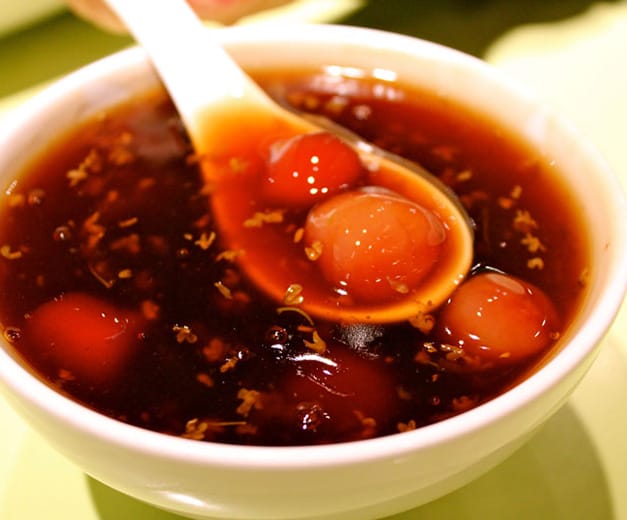You pass through the doleful Imeretian coal town of Tkibuli, wind 750 meters up the Nakerala pass and just as you catch your breath from the climb, you lose it again dropping down from the summit, for you have entered Racha-Lechkhumi, one of the most gorgeous regions in Georgia.
We were first here in 2004, for an art festival organized by a local poet who had the unnerving habit of always speaking in verse. Since that mind-bending weekend, the regional capital of Ambrolauri hasn’t changed much. There is a new little airport, a few modest hotels, a couple humble restaurants, and a giant bottle of Khvanchkara that still stands in the middle of town, though it has been renovated. The vibe is as mellow as ever.

Racha wouldn’t mind being a tourist hotspot; it just doesn’t seem to be in a hurry to become one. What Racha lacks in exploitive developers and famous versifiers, it makes up for in swine and wine. This is the land of Georgian smoked pork from pigs fed on forest acorns, chestnuts and wild apples. No other province in the country dares compete. And its wine is renowned for its sophistication, despite being the smallest wine producing region in the country.
There are about two dozen indigenous local grape varieties made into wine, but the grapes that put Racha on the map are its red Aleksandrouli and Mujuretuli, which nobleman Dimitri Kipiani blended in the 1870s to make a velvety, semi-sweet, ruby-colored nectar called Kipiani wine. In 1907, Kipiani picked up a prestigious Gold Grand Prize at the European Wine Festival in Osten, Belgium, which is displayed at the Georgian National Museum.
Racha’s wine is renowned for its sophistication, despite being the smallest wine producing region in the country.
When the Bolsheviks arrived in the 1920s, they confiscated the vineyards and changed the name of the princely wine to Khvanchkara, a village in the heart of Racha’s vine lands. Kipiani died homeless and penniless in 1934, but his wine survived the destructive Soviet period and his method, based on “ancient traditions,” was supposedly preserved and improved upon in the 1940s with the introduction of refrigeration. However, since the USSR placed quantity over quality, it is hard to say how good the Khvanchkara of that period really was.
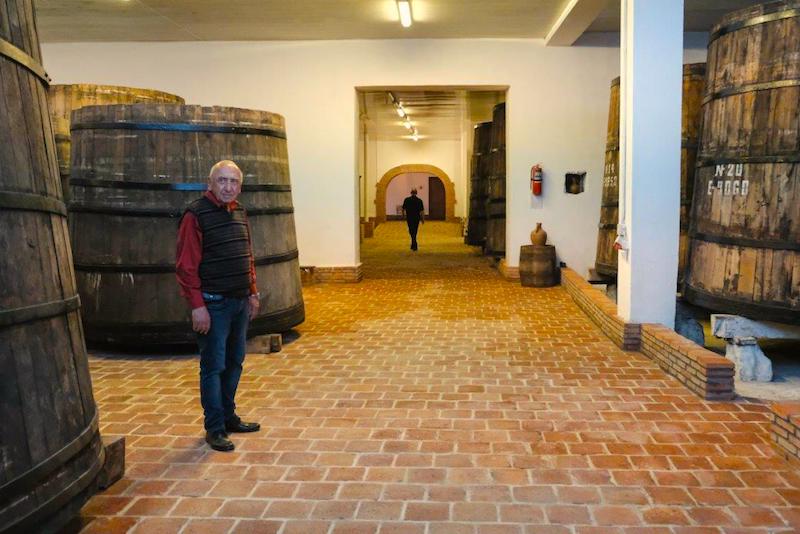
In 2015, new owners resurrected Kipiani’s Khvanchkara factory, and established Khvanchkara Ltd., bringing with them new technology to refine the production of 150,000 of bottles a year, which include Khvanchkara, Aleksandrouli, Tsitska and Kakhetian wines. The old Soviet oak barrels remain in the cellar as ornaments, while Kipiani’s legacy pours out of stainless steel tanks. Khvanchkara is a wine of appellation of controlled origin (AOC), which means you can’t legally make it unless the grapes are from this micro zone, which is between 650-750 meters in elevation. Some local winemakers may add Saperavi, Tavkveri or Ojaleshi to the Aleksandrouli for an excellent blend, but it’s not Khvanchkara. And because the demand is higher than the supply, the temptation to make fake Khvanchkara is great.
The Khvanchkara Association is a collective of 150 people who guarantee the grapes they sell are Aleksandrouli and Mujuretuli, so that other Georgian winemakers can make Khvanchkara, regardless of where their wine cellars are. But it is the local, family-made stuff we like most. From the balcony of his vineyard home in Jvarisa, Sulkhan Gonadze, head of the association, pours us a Khvanchkara with the traditional blend of 60 percent Aleksandrouli and 40 percent Mujuretuli. It’s honest wine but more interesting is his dry Khvanchkara, which is spicy and tannic. Unfortunately, he is not bottling his wines yet.
Down the road in Sadmeli, 19 year-old Mariam Margvalidze pours a glass of her family Khvanchkara. The nose is of dry plums and ripe cherries the blend is recognized for, and the palate is full of the wild berries you would find in the surrounding forests with gentle tannins and a silky sweetness that begs for a bite of dark chocolate.
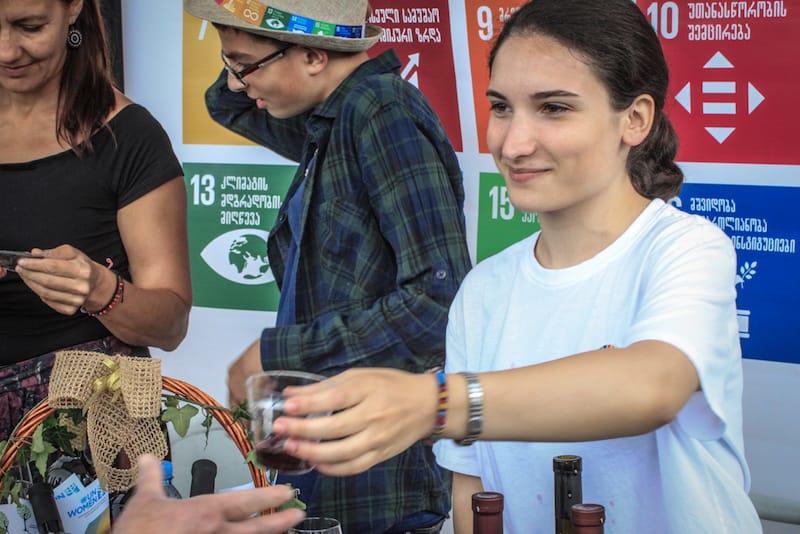
Mariam is carrying on the generations-long family tradition with the help of her grandfather Gogi. They add no yeasts for fermentation or sugar to sweeten the wine. The harvest is pressed into a satsnakheli, a long, hollowed-out log where the grapes are crushed by foot. Only the juice is fermented and to ensure the natural sweetness, the process is stopped early by sulfitation or temperature control (depending on the ph level). It is then stored in kvevri (large vessels made of clay) before being bottled.
“We haven’t changed the recipe. It’s tradition,” Mariam asserts. What is not traditional is the custom of women making wine. Mariam, who is studying agriculture, aims to join the growing number of Georgian women who are ignoring customary gender roles and making superb wine. “When I was 16, thinking about my future profession, I saw Baia Abuladze [a young Imeretian winemaker] on TV talking about women in winemaking. It was inspirational,” Mariam says, smiling. “My family was happy I didn’t choose to study economics. I’m continuing the family tradition.”
 October 27, 2020 Le Vésuvio
October 27, 2020 Le Vésuvio
“You’re going to need this,” the owner winks, handing us a steak knife to dig into our […] Posted in Marseille January 18, 2018 Bazaar Foods
January 18, 2018 Bazaar Foods
For years we’ve looked into every Indonesian nook and cranny in New York, yet we always […] Posted in Queens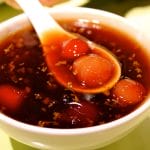 February 19, 2016 Tangyuan
February 19, 2016 Tangyuan
Lantern Festival (元宵, yuánxiāo, or “first night”) is the 15th day of the Chinese New […] Posted in Shanghai
Published on June 21, 2019
Related stories
October 27, 2020
Marseille“You’re going to need this,” the owner winks, handing us a steak knife to dig into our colossal calzone. When a customer wanting a quick bite orders macarronada (penne topped with meatballs, sausage and tomato sauce) he warns that it’ll take some time since “we make our pasta fresh.” Clearing the table next to us,…
January 18, 2018
QueensFor years we’ve looked into every Indonesian nook and cranny in New York, yet we always discover something new at the monthly Indonesian bazaar at the St. James Episcopal Church. We’re not surprised. Indonesia, the fourth-most-populous country in the world, comprises some 17,000 islands that stretch over a vast archipelago of diverse culinary habitats. We’ve…
February 19, 2016
ShanghaiLantern Festival (元宵, yuánxiāo, or “first night”) is the 15th day of the Chinese New Year, and marks the last day of Spring Festival. This “first night” is actually the first full moon of the lunar new year, and in the Year of the Monkey it falls on February 22. On this holiday, it’s customary for revelers to…







































